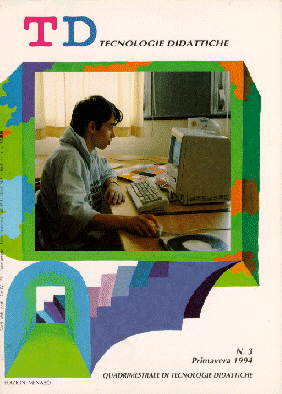In search of new educational meaning: children as multimedial authors
Main Article Content
Abstract
Hypermediality debate on 'the hypothesis that the children themselves to become multimedia authors. Besides the operating theoretical reference, describes a working method, derived from work with students, potentially applicable to many teachers and researchers interested in the subject.
Article Details
Section
Articles - Special Issue

This work is licensed under a Creative Commons Attribution-NonCommercial 4.0 International License.
Authors who publish with this journal agree to the following terms:
- Authors retain copyright and grant the journal right of first publication with the work simultaneously licensed under a Creative Commons Attribution-NonCommercial 4.0 International License.
- Authors are able to enter into separate, additional contractual arrangements for the non-exclusive distribution of the journal's published version of the work (e.g., post it to an institutional repository or publish it in a book), with an acknowledgement of its initial publication in this journal.
- Authors are permitted and encouraged to post their work online (e.g., in institutional repositories or on their website) prior to and during the submission process, as it can lead to productive exchanges, as well as earlier and greater citation of published work (See The Effect of Open Access)
References
A. Calvani, Hypermedia: Interactive Exploration of a Medieval Town, in Educational & Training Technology International, Kogan Page, Febr. 1990, Vol. 27, n.1, pp. 51-57
A. Calvani, Ipertesti ed educazione, Scuola e città, 11, 485-496
A. Calvani, R. Degl’Innocenti, F. Franceschi, R. Ricotti, Storia al computer, in “I Viaggi di Erodoto”, n.7, 1989, pp.148-154
European Conference about Information Technology: A Critical Insight, Barcellona, 1992, Nov 3-6
G. Staccioli (a cura di), Progettare immagini, Firenze, La Nuova Italia,1993
Libro vivente n.1. Applicazione realizzata con Linkway Live IBM, A.Calvani, V. Badii, Laboratorio di Tecnologie dell’Educazione, Univ. di Firenze
N. Postman, Ecologia dei media. La scuola come contropotere, Armando, 1981
R. Fragnito, Educazione e comunicazione nella società multimediale, Morano, Napoli, 1989
R. J. Spiro, P. J. Feltovich et al., Knowledge Representation, Content Specification, and the Development of Skill in Situation-Specific Knowledge Assemby; Some Constructivistic Issues as They Relate to Cognitive Flexilbility Theory and Hypertext, Educational Technology, Sep. 1991, 22-25
R. Maragliano, La tecnologia fa scuola, Anicia, Roma, 1992
R.Spiro, J.C. Jehng, Cognitive Flexibility and Hypertext: Theory and Technology for the Nonlinear and Multidimensional Traversal of Complex Subject Matter, in D. Nix, R. Spiro, Cognition, Education, Multimedia, L.E.A., Hillsdale, N.J. 1990
V. Badii, Ipertesti a scuola, Multimedia, 4, 1992, 47-50
A. Calvani, Ipertesti ed educazione, Scuola e città, 11, 485-496
A. Calvani, R. Degl’Innocenti, F. Franceschi, R. Ricotti, Storia al computer, in “I Viaggi di Erodoto”, n.7, 1989, pp.148-154
European Conference about Information Technology: A Critical Insight, Barcellona, 1992, Nov 3-6
G. Staccioli (a cura di), Progettare immagini, Firenze, La Nuova Italia,1993
Libro vivente n.1. Applicazione realizzata con Linkway Live IBM, A.Calvani, V. Badii, Laboratorio di Tecnologie dell’Educazione, Univ. di Firenze
N. Postman, Ecologia dei media. La scuola come contropotere, Armando, 1981
R. Fragnito, Educazione e comunicazione nella società multimediale, Morano, Napoli, 1989
R. J. Spiro, P. J. Feltovich et al., Knowledge Representation, Content Specification, and the Development of Skill in Situation-Specific Knowledge Assemby; Some Constructivistic Issues as They Relate to Cognitive Flexilbility Theory and Hypertext, Educational Technology, Sep. 1991, 22-25
R. Maragliano, La tecnologia fa scuola, Anicia, Roma, 1992
R.Spiro, J.C. Jehng, Cognitive Flexibility and Hypertext: Theory and Technology for the Nonlinear and Multidimensional Traversal of Complex Subject Matter, in D. Nix, R. Spiro, Cognition, Education, Multimedia, L.E.A., Hillsdale, N.J. 1990
V. Badii, Ipertesti a scuola, Multimedia, 4, 1992, 47-50

